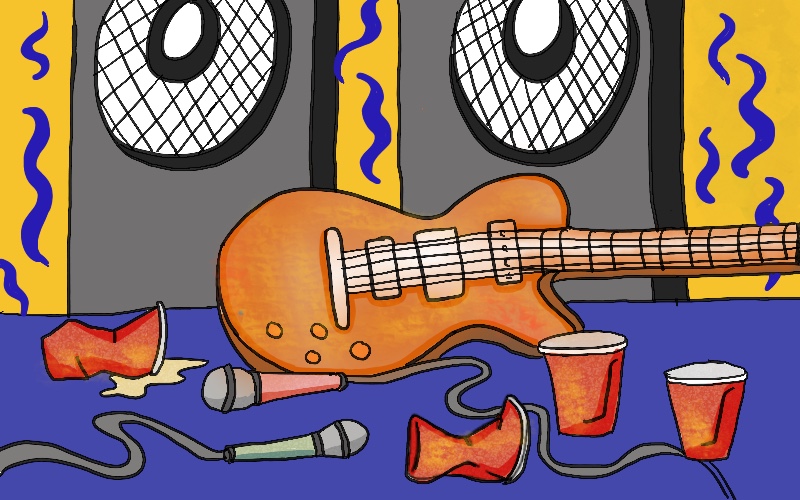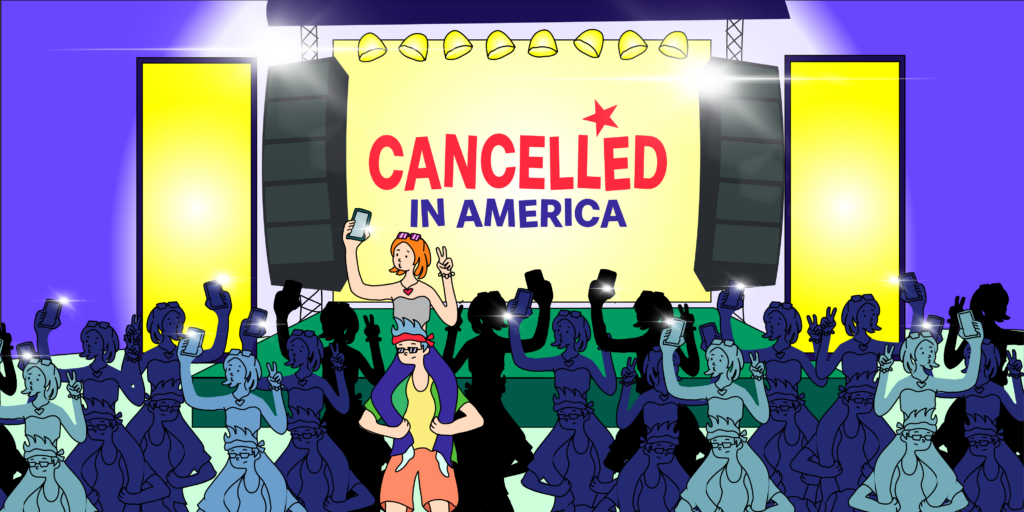As far as popular music goes, 2024 will be remembered for Beyoncé’s reach into her Houston country roots for Cowboy Carter, the return of Bruce Springsteen & the E Street Band to stadium rocking, the continuing bad beef between Drake and Kendrick Lamar, and the multi-billion-dollar streaming sales of Taylor Swift’s Tortured Poets. For better or worse.
In a far more notorious fashion, however, 2024 will also be known as the true beginning of the end of mega-live music festival culture with the unexciting two weekends of Coachella in Indio, California, the probable finale of Delaware’s Frye Festival, and, after two straight years of cancellation, the Made in America festival in Philadelphia.
Once the very height of the live concert experience, large-scale, multi-day festivals of mixed genre music have been de rigeur throughout Europe as long as rock learned to roll with 1970s-born showcases such as Great Britain’s Glastonbury Festival, ruling the roost hosting upwards of 200,000 attendees each and every year.
Repeating Glastonbury’s heights, the revelry and reverie of artists that filled the desert of Indio with peak audiences of more than 250,000 attendees in 2017 was thrilling — and perhaps repeatable, considering the multitude of live festivals borne in the wake of Coachella’s 1999 start and its initial dedication to under-the-radar artists. Moving from tents and bookings such as Beck and Tool into luxe commodities with pricey VIP amenities such as private cabanas, tony sleep accommodations, and gourmet meal packages also moved the needle on what a live festival away from home could be, especially when you consider that Coachella started out as resistant to overt commercialization and sponsorship deals.
By 2024, those same mixed bags have become less mixed and more baggy as larger-scale artists – the Beyoncés and Taylor Swifts of the world, to say nothing of hugely successful stadium-touring artists such as Drake, Pink and The Weeknd – now usually eschew festivals for their own money-making tour schedules.
Once you let mainstream names such as Harry Styles and Billie Eilish into your party (as Coachella did in 2022), to say nothing of rock elders (Paul McCartney, AC/DC, Roger Waters) and pop goddesses (Ariana Grande, Blackpink, Lady Gaga), being able to find equitably sized artists becomes a difficult task. This writer adores 2024 Coachella headliners Lana Del Rey, Blur, Tyler the Creator and Doja Cat, but they exist in a world between Coachella’s first alt-artist impulses and the rarified air of superstars such as McCartney, Gaga and Styles, and therefore, don’t carry the weight that makes moneyed attendees want to fly in from across the country to bask in their glory.
For example: it took almost a month for the first weekend of Coachella to sell out, something that normally happens within a week of putting its tickets on sale. More than likely, that second weekend didn’t bother to sell out at all.

Which brings us to another point: if Bey, Drizzy and Tay aren’t headlining your festival – and those many festivals across the breadth of the United States – who is? Pretty much those handfuls of mid-level names such as Del Rey and Doja Cat, acts that are playing several other festivals this season. Throw a dart at Live Festival Culture 2024, and you’ll likely hit Post Malone, SZA, Noah Kahan, Megan Thee Stallion (who is also touring on her own – weird), Lil Wayne, The Killers and Hozier. There’s no reason to drive or fly across the country to see that special Post Malone gig if he’s playing six other festivals near your house, or Megan Thee Stallion if her solo headlining show just passed.
Only Jack Harlow’s newly-launching Gazebo Festival in Louisville, Kentucky will feature his white-guy rap talents (along with SZA) on May 25-26. And the one-day Cruel World Festival that took place on May 11 at the Rose Bowl in Pasadena was the only place where you could get new-wave stars such as Duran Duran, Interpol, Blondie, Simple Minds, Placebo, Soft Cell and Adam Ant.
Another thing that is currently cursing festival culture and threatening its continued existence (or at least downplaying the possibilities of anything hip) is its move from hosting little-to-no sponsorship and/or runaway advertising and/or rampant commercial ad placement to what occurred at 2024’s Coachella and with its myriad of sponsors and wealth of influencers filling TikTok and Instagram like ants at picnics. There’s nothing more surefire to remove an event’s cool factor than having countless influencers — some rumored to have never actually used their free tickets — giving you their limp, pay-to-play Good Housekeeping Seal of Approval.
All-of-the-above issues factor into what happened to Made in America (MIA) – rapper-entrepreneur-Beyoncé-husband Jay-Z’s annual two-day festival held outside the Philadelphia Museum of Art – along with several, unique 99 problems of its own.
Birthed in 2012 as a Budweiser-sponsored event designed to, in curator Jay-Z’s paraphrased words, “trade off each other’s culture — country, indie rock, rap — coming together because lines and the titles can never keep us apart” easily packed the Art Museum area with its initial scheduling of big-name hip-hop acts on one evening with modern rock acts the next night. Since nothing like this had happened before in the Philadelphia area, weekend bills such as Jay-Z and Pearl Jam, Beyoncé and Nine Inch Nails, Kanye West and Kings of Leon thrilled and amazed all comers. Equal success could be found in Made in America’s 2018-and-beyond bills filled solely with hip-hop and R&B headliners such as Nicki Minaj, Kendrick Lamar, Justin Bieber, and its lone Latin continuum booking in post-reggaeton hero, Bad Bunny.
Where Made in America’s crack began to show comes in its relationship — not to the city, whose mayors Michael Nutter and Jim Kenney welcome Jay-Z with open arms (this includes Kenney hanging in the VIP area in cargo shorts and a tie-dye T-shirt) – but to the Art Museum area itself which felt lied to by its committee people as to its noise levels, food filth and wealth of messy drunk-and-druggy youth in attendance. Luckily, clean-up for each weekend’s flotsam was always fast with traffic open within hours of the Labor Day event. Along with strained relationships with the Art Museum neighborhood, its curator and co-founder Jay-Z grew less directly involved with the festival he started and made broad pronouncements around. Sole-artist-driven music events need their patron saints to remain at the helm, and perhaps not worried about buying NFL teams or booking Basquiat exhibitions across the states.
Then came Lizzo.
Made in America 2023 was set for September 2 and 3 and would feature headliners Lizzo and SZA. By August 8, however, thee festival was cancelled due to “severe circumstances outside of production control.” At the time, there was no official reason given for the abrupt cancellation, but it was no secret that MIA’s take-down came right after a lawsuit alleging sexual misconduct and a hostile work environment was filed against Lizzo from members of her staff and dancers, in particular calling Lizzo out for sexual, religious, and racial harassment, disability discrimination, assault, false imprisonment, creating a hostile work environment, and weight-shaming. That Lizzo was initially hailed for her inclusion of plus-sized women as part of her dance troupe and her 2022 streaming series Lizzo’s Watch Out for the Big Grrrls made the latter accusation the most painful of the bunch.
Rather than take any sides for-or-against Lizzo at a time when he was being urged so, Jay-Z and his staff simply pulled the plug on Made in America’s 2023 iteration, and never even bothered to book a 2024 MIA festival – perhaps due to many of the aforementioned reasons (same acts, festival fatigue) that plague other North American multiple-day live music events.
The festivals that do succeed — from June’s Roots Picnic, hosted and curated by Philadelphia’s own The Roots at the bucolic Mann Center to California’s Cruel World to the just-wrapped New Orleans Jazz and Heritage Festival headlined by the Rolling Stones — are smaller, tighter, more manageable affairs that don’t require banging audiences over the head with flashing advertisements, mega-TikTok-ing and explosive over-the-top financials.
The lesson, then, for live music festivals going forward, be they Indio-bound or Philly Made: Produce your fest in more intimate environments with more direct involvement from its curators, move toward less corporate and Influencer presence, and slow the roll on booking Post Malone.•




